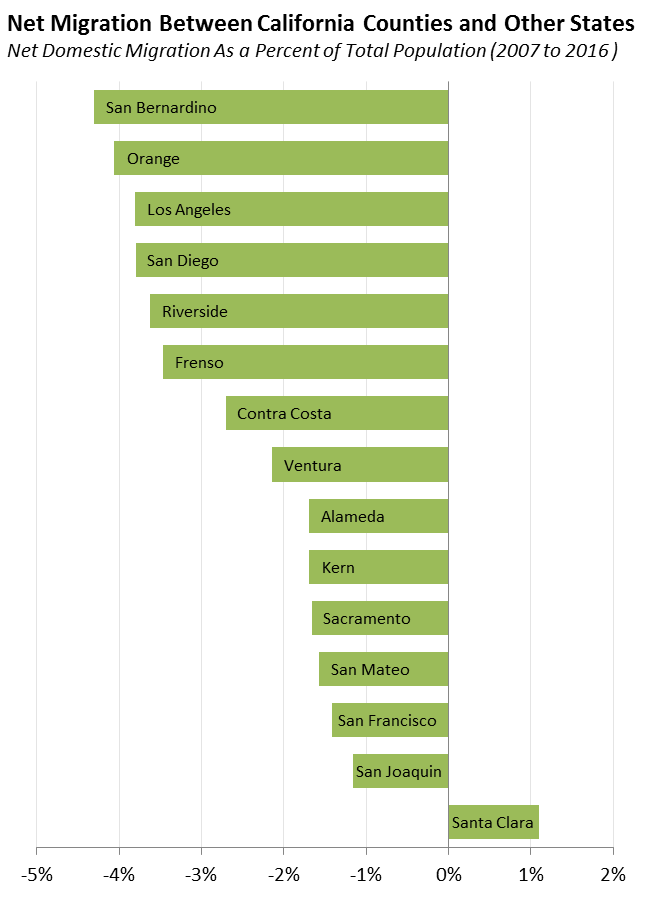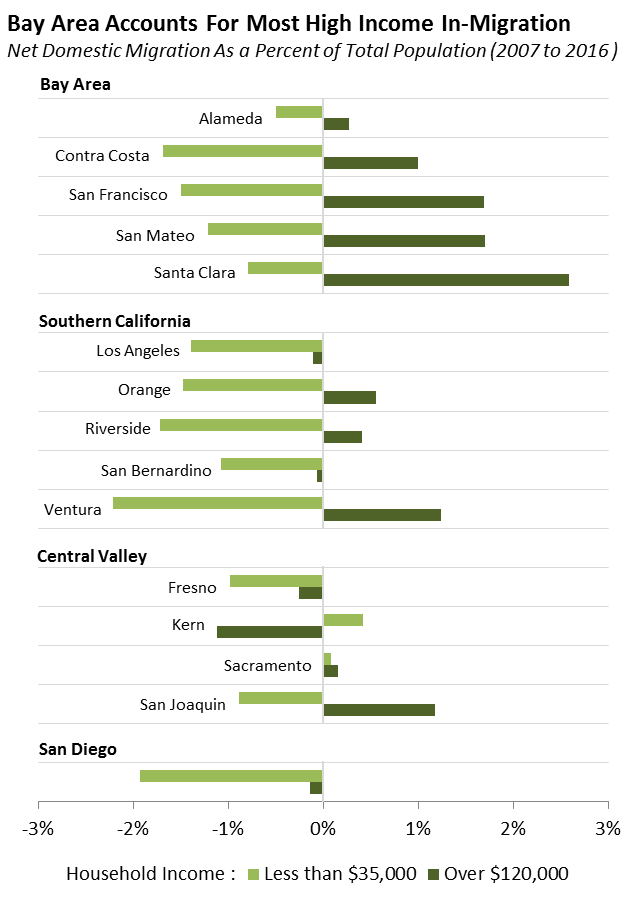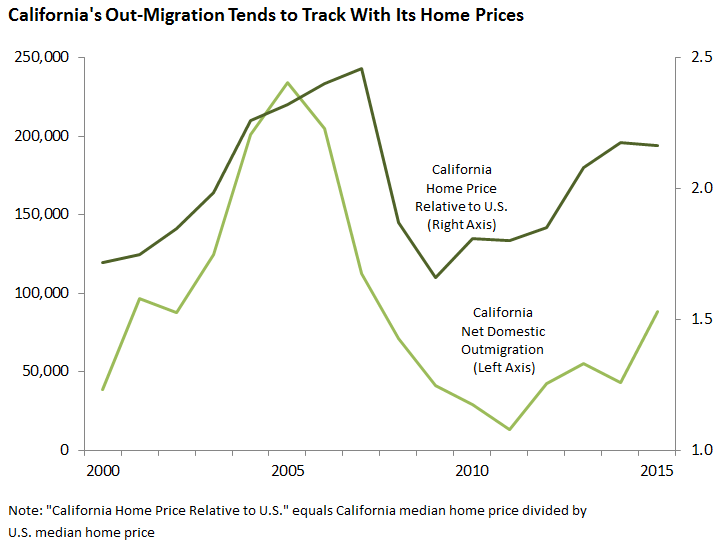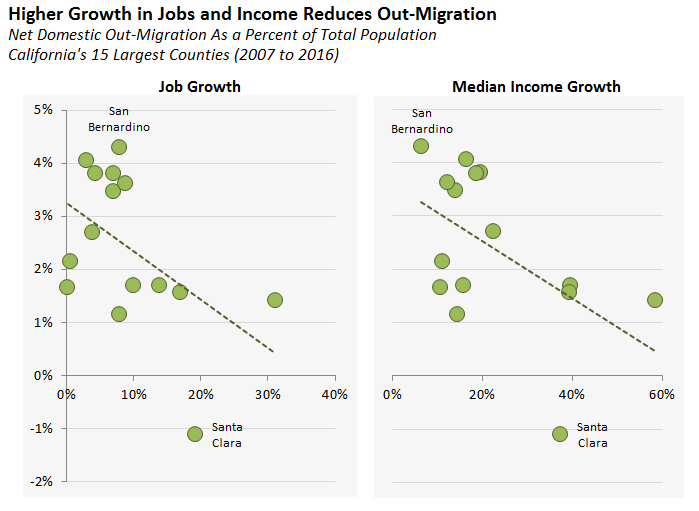Recently, we discussed how California has lost about 1 million residents to domestic migration over the last decade, about 2.5 percent of the state’s population. These outflows came disproportionately from southern California. The southern California counties of Los Angeles, Orange, Riverside, San Bernardino, and Ventura accounted for about two-thirds of California’s total domestic out-migration between 2007 and 2016. Out-migration from these counties to other states was equal to about 3.5 percent of their total population. This compares to a little under 2 percent for the rest of the state. In contrast, out-migration from the San Francisco Bay Area was comparably lower—led by Santa Clara County, which was the state’s only major county to experience net domestic in-migration over the past decade. The figure below shows out-migration as a percent of total population for the state’s 15 most populous counties.
In our recent post, we also noted that despite overall out-migration from the state, California has been gaining those with higher incomes. As the graphic below shows, the Bay Area has accounted for most of this influx of higher income residents. Over the last decade, the state added around 100,000 residents with household incomes of $120,000 or higher. About 85 percent (85,000) of these higher-income individuals moved to the Bay Area counties of Alameda, Contra Costa, San Francisco, San Mateo, and Santa Clara. These counties account for only about 15 percent of the state’s total population.
What drives the variation in domestic migration across California counties? To answer this question, it is important to start with the baseline observation that California’s high cost of living—primarily driven by high housing costs—means the state will tend to have higher out-migration than most other states. The positive relationship between housing costs and out-migration can be seen in the graph below.
Strong economic growth within the state can create a counterweight to the outward push of high housing costs. When job markets are strong and income growth is robust, more people are able to afford California’s high housing costs and are, in turn, more likely to stay or move here. These countervailing forces are greater in some parts of the state than others. These differences in economic growth help to explain the variation in domestic migration among California’s counties. This can be seen in the graph below, which shows that counties with more job and income growth had less out-migration (and vice versa). San Bernardino County, which had the highest rate of net domestic out-migration among large counties, had comparatively low growth in jobs and income. Conversely, Santa Clara, which saw net domestic in-migration, had comparably strong job and income growth.




